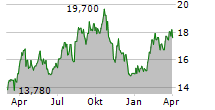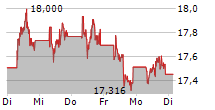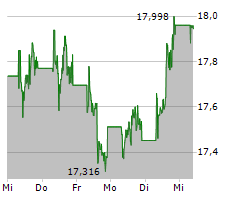
Vancouver, British Columbia--(Newsfile Corp. - February 3, 2025) - Japan Gold Corp. (TSXV: JG) (OTCQB: JGLDF) ("Japan Gold" or the "Company") is pleased to report the results of the initial drill program at the Barrick Alliance Togi Project located on the Noto Peninsula, Honshu Island, Japan.
Drilling at the Togi Project - Akasaka target has increased confidence in extensions to a concealed and well-preserved low-sulfidation gold system, extending a kilometer from known workings and with strike potential of an additional 2 kilometers.
"The Togi drill program has provided encouragement to the proposed exploration model at Akasaka of a concealed epithermal system extending along strike of the Mori vein workings. A syn to post-mineral basin, formed along the flanks of the Mori fault, hosts mineralized quartz vein clasts and anomalous gold in BLEG drainages along a 3-kilometer strike corridor. It is inferred that movement on the Mori fault has buried segments of the epithermal system during its formation providing potential for concealment and preservation of an epithermal system with significant scale," commented Mr. Andrew Rowe, Exploration Manager for the Barrick Alliance.
An initial two drill holes were completed at the Akasaka target in November 2024 targeting concealed strike extensions of the Mori vein where historical workings produced 16,500 oz of gold at an average grade of 14 g/t Au. The two drill holes located 700 metres along strike of the Mori workings and spaced 350 metres apart targeted vein extensions below concentrations of sinter scree, and quartz vein boulders and cobbles hosting gold grades up to 79.7 g/t gold, refer to Figure 1.
Drilling intersected parallel alteration zones representing inferred structural extensions of the Mori fault and Mori vein hanging-wall structures concealed by up to 140 metres of syn to post mineralization andesite and conglomerate. Alteration intersected hosts low-temperature clay assemblages and spaced narrow opaline to chalcedonic-carbonate-sulphide veins anomalous in pathfinder elements including gold. The Mori Fault zone intersected in the lower sections of both drill holes is also anomalous in gold, hosting breccia clasts of quartz-carbonate vein indicating the fault was actively moving during mineralization providing the potential for dynamic boiling levels and faulting, refer to Figure 2 and Tables 1 and 2.
The Togi drill program was fully funded by Barrick Gold Corporation through its alliance with Japan Gold. A joint Japan Gold/Barrick technical committee oversees the work programs. Advancement of the Togi project will be prioritized based on results of drill programs scheduled to commence at the Hakuryu and Ebino projects in April this year.
The Togi project
The Togi Project comprises an area of 3,990 hectares and covers the historic Togi Goldfield which includes the Urugami and Hirochi areas of workings. Gold mineralization was discovered in the Togi area in 1896, seven separate areas of workings along a 7 km trend produced a combined 48,000 oz of gold and 180,000 oz of silver between 1910-21. The Mori vein from the Hirochi group at the northeast end of the corridor was reported to be up to 4 m wide with production grades averaging 14 g/t gold. Records show mineralization in lower mine levels appear open to depth with average grades of 8.12 g/t gold and 56.9 g/t silver1. Gold and silver mineralisation from the Urugami veins in the southwest of the corridor are hosted in stockwork vein and breccia zones. Mapped Sinter and the narrower stock-work style of quartz vein mineralization at Urugami indicate the top of a hot-spring epithermal system is preserved, supporting the potential for deeper boiling-zone vein targets in this area.
Table 1: Significant Mineralized Intercepts
| Drill Hole ID | From (m) | To (m) | Length (m) | Au (ppm) | Ag (ppm) |
| TGDD-24-001 | 325.80 | 326.30 | 0.50 | 0.2 | 0.8 |
| TGDD-24-001 | 327.80 | 328.30 | 0.50 | 0.3 | 2.0 |
| TGDD-24-001 | 348.50 | 349.15 | 0.65 | 0.2 | 0.7 |
| TGDD-24-002 | 537.30 | 538.30 | 1.00 | 0.3 | 1.6 |
| TGDD-24-002 | 542.10 | 542.60 | 0.50 | 0.2 | 1.2 |
| TGDD-24-002 | 543.35 | 543.85 | 0.50 | 0.3 | 3.5 |
Table 2: Drill Hole Data
| Drill Hole Number | Location | Easting | Northing | RL (m) | Azimuth ° | Dip° | Length (m) |
| TGDD24-001 | Akasaka | 658394.0 | 4112638.0 | 197.2 | 330 | 45 | 403.5 |
| TGDD24-002 | Akasaka | 658368.0 | 4112431.0 | 224.1 | 295 | 45 | 564.7 |
References
1 Gold Mines of Japan, 1989. The Mining & Materials Processing Institute of Japan.

Figure 1: Togi Project, simplified geological map of the Akasaka target area within the Togi Goldfield with drill hole summaries, rock geochemistry and >10 ppb BLEG footprint.
To view an enhanced version of this graphic, please visit:
https://images.newsfilecorp.com/files/5665/239379_43c532bce46b88db_002full.jpg

Figure 2: Drill hole sections for TGDD-001 and 002 with interpreted geology and significant intercepts.
To view an enhanced version of this graphic, please visit:
https://images.newsfilecorp.com/files/5665/239379_43c532bce46b88db_004full.jpg
Sampling Techniques and Assaying
The drilling results discussed in this news release are from drill core samples obtained by PQ, HQ and NQ-size triple-tube diamond core drilling using a PMC-700 drill rig owned and operated by the Company. The drilling program was fully supervised by Company senior geologists at the drilling site.
The drill core was collected in plastic core trays at the drill site and transported by road in Company vehicles to its core handling facility in the nearby Togi Village, near the project area. The drill core was carefully logged, photographed and sample intervals were marked up along predicted mineralized and unmineralized intervals along the entirety of the drill holes by Japan Gold senior project geologists.
Sample lengths varied from 0.5 to 3.0 metres, depending on the positions of geological contacts and variations in alteration composition. The core was split by a diamond rock saw supervised by project geologists. The half-core sample was collected from the entire length of each designated sample interval and placed into individual-labelled, self-sealing calico bags for secure packaging and transport to the laboratory. The half-core samples weighed between 1.0 to11.0 kilograms depending on the sample length and core size. A chain of custody was established between the Company and the receiving laboratory to ensure the integrity of the samples during transportation from the site to the lab. The samples were sent in batches to ALS Laboratories in Vancouver, Canada for sample preparation and assaying.
Samples were crushed, pulverized and assayed for gold 50-gram charge Fire Assay / AAS Finish (Au-AA24; 0.005 ppm lower detection limit) and a 48 multi-element by 4-acid digest with ICP-MS determination (ME-MS61L; Ag 0.002 ppm lower detection limit). Over-limit Au and Ag samples were re-assayed by fire-assay and gravimetric finish (GRA-22, LDL of 0.5 and 5 ppm for Au and Ag respectively).
Certified Reference Materials ("CRMs") were inserted by Japan Gold KK at every 20th sample to assess the repeatability and assaying precision of the laboratory. In addition, the laboratory applied its own internal Quality Control procedure that includes sample duplicates, blanks & geochemical standards. They report these results with the certified Assay Report. Laboratory procedures and QA/QC protocols adopted are considered appropriate. The CRMs and internal QA/QC results fall within acceptable levels of accuracy & precision and are considered to lack any bias.
Qualified Person
The technical information in this news release has been reviewed and approved by Japan Gold Exploration Manager, Barrick Alliance, Andrew Rowe BAppSc, FAusIMM, FSEG, who is a Qualified Person as defined by National Instrument 43-101.
About Japan Gold Corp.
Japan Gold Corp. is a Canadian mineral company focused on the exploration and discovery of high-grade epithermal gold deposits across the main islands of Japan. The Company holds a significant portfolio of tenements covering areas with known gold occurrences, history of mining and prospective for high-grade epithermal gold mineralization in one of the most stable and underexplored countries in the world. The Japan Gold leadership and operational team of geologists, drillers and technical advisors have extensive experience exploring and operating in Japan and have a track record of discoveries world-wide. Japan Gold has an alliance with Barrick Gold Corporation to jointly explore, develop and mine certain gold mineral properties and mining projects with the potential to host Tier 1 or Tier 2 gold ore bodies in Japan. Significant shareholders include Equinox Partners Investment Management LLC and Newmont Corporation.
On behalf of the Board of Japan Gold Corp.
John Proust
Chairman & CEO
For further information, please contact:
Alexia Helgason
Vice President, Corporate Communications
Phone: 604-417-1265
Email: ahelgason@japangold.com
Cautionary Note
Neither the TSX Venture Exchange nor its Regulation Services Provider (as such term is defined in the policies of the TSX Venture Exchange) accepts responsibility for the adequacy or accuracy of this release. This news release contains forward-looking statements relating to expected or anticipated future events and anticipated results related to future partnerships and the Company's 2025 gold exploration program. These statements are forward-looking in nature and, as a result, are subject to certain risks and uncertainties that include, but are not limited to, the timing and granting of prospecting rights; the Company's ability to convert prospecting rights into digging rights within the timeframe prescribed by the Mining Act; general economic, market and business conditions; competition for qualified staff; the regulatory process and actions; technical issues; new legislation; potential delays or changes in plans; working in a new political jurisdiction; results of exploration; the Company's ability to execute and implement future plans, arrange or conclude a joint venture or partnership; and the occurrence of unexpected events. Actual results achieved may differ from the information provided herein and, consequently, readers are advised not to place undue reliance on forward-looking information. The forward-looking information contained herein speaks only as of the date of this News Release. The Company disclaims any intention or obligation to update or revise forward-looking information or to explain any material difference between such and subsequent actual events, except as required by applicable laws.

To view the source version of this press release, please visit https://www.newsfilecorp.com/release/239379
SOURCE: Japan Gold Corp.




